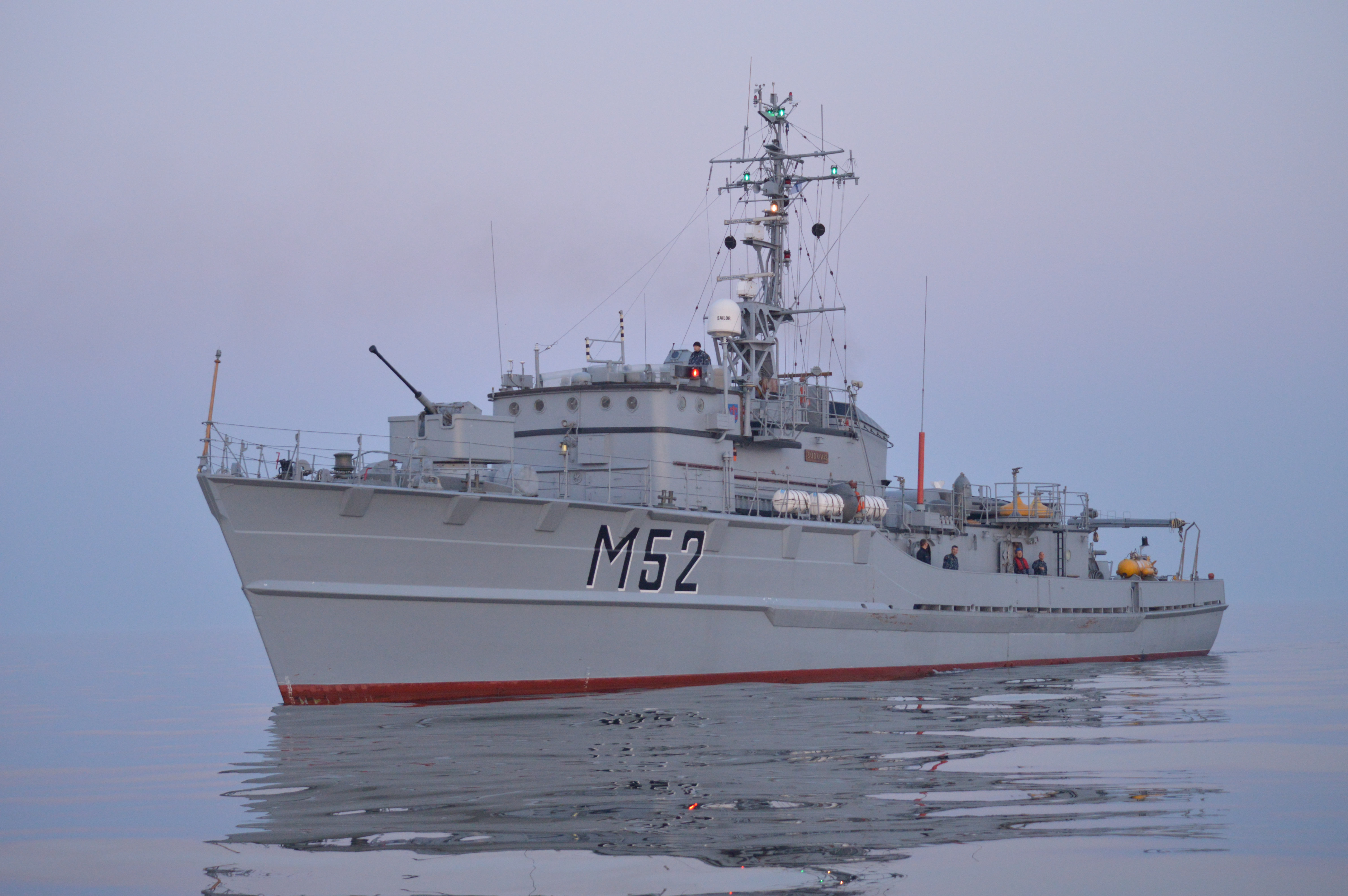SHIP: We are in the central control room – the place where mine hunting is led at sea. The mine-hunting is commanded by a minehunter, while two soldiers focusing on a console accurately monitor the seabed for abandoned mines, bombs or other dangerous finds. When a suspicious object is detected, the commander decides whether to send the robot to the depths. On watch, the officer monitors navigation of the ship, direction of wind and currents of water. He communicates with other ships, and the soldiers mark on a computer screen the underwater objects they find. During the four-hour watch, the watch rotates – some go to rest, others continue to hunt for the hidden secrets of the sea.
Background sound: calls one of the crew members “Prepare the starboard robot for launching; soundman, stand by. Repeat: “Soundman, stand by.”
SOUNDMAN: My name is Andrius Galdikas. I served on board from 2008 until the last days of the ship’s service. I started as a soundman, then I became a chief of the signalling team. The job of a soundman is to take care of PAP 104 underwater robots. I supervised, charged and prepared them for work according to a strict schedule.
SOUNDMAN: Mine-hunting has not always been successful. Sometimes you spend days watching the sonar screen, trying to identify whether the objects underwater are mines or just stones. It’s a test of patience. The sonar is our eyes in the depths of the sea, but it is only when a potential mine appears on the screen and the mood of the crew changes completely. The real action begins. The greatest reward is when we find a mine and successfully detonate it. Such moments would be remembered by the entire crew as a victory.
Background sound: “Your mission is completed.”
SHIP: People think that the sea is clean, that there is nothing left. During the First and Second World Wars, around 170,000 mines or other explosive devices were installed in the Baltic Sea. Although a lot of clean-up work has been done to make ships and people feel safe, to this day, large quantities of explosives remain in the sea and pose a danger.
SHIP: Let’s move on to the next combat station.
